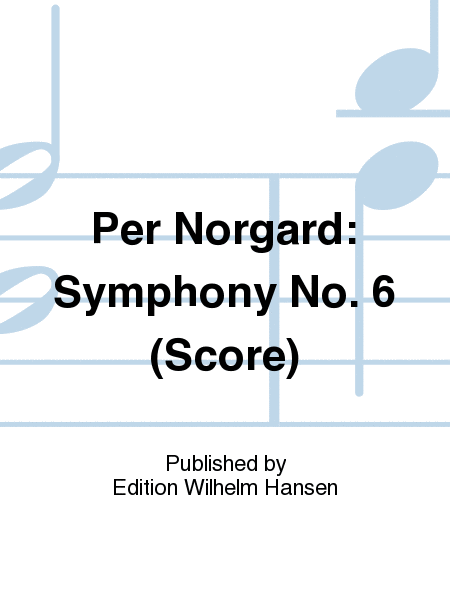Symphony No. 6 'At The End Of Day'
Details
Description
SKU: HS.14032192
Composed by Per Norgard. Music Sales America. Classical. Set (Score & Parts). 180 pages. Edition Wilhelm Hansen #WHKP00865. Published by Edition Wilhelm Hansen (HS.14032192).ISBN 9788759858394. 12x16.5 inches. International (more than one language).
Symphony No. 6 'At The End Of Day' (1997-99) for Orchestra by Per Nørgård.
Programme note:
”… with the Lord a day is like a thousand years, and a thousand years is like a day”
(New Testament, 2 Peter 3:8)
My SYMPHONY NO. 6 was commissioned by the Danish National Radio Symphony Orchestra, the Göteborg Symphony Orchestra and the Oslo Philharmonic Orchestra, to be premiered at the millenium 2000.
The subtitle AT THE END OF THE DAY can be understood literally or it can mean “when all is added up”. However, in my opinion,nothing ever quite adds up, there is always “something” missing, any ending will be provisional ...
This symphony appears to end only a few minutes into the first movement, the first passage, as the music fades away to almost-silence, after a start of flying colours. But then there is still “something”, a small motive (first heard in the initial sound-waves) which reappears, hesitant, but persistent, and this embryo is what leads on the musical progression. An agitated section of many instrumental voices comes next, until all the voices become obsessed with the same phrase, a see-saw motive based on thirds. This section evolves into almost martial ferocity, when broken off by a tutti descent into an extreme bass-world (a bass-world which actually permeates the whole symphony, emplyoing instruments that I have never used before: double-bass tuba, double-bass trombone, double-bass clarinet, and bass flute).
The second movement, the second passage, apparently takes off where the first passage ended, but now the events are more ambiguous, and the same music may be perceived as fast-moving one moment and slow-moving the next. This section is a kind of passacaglia, the characteristic baroque bass-variation.
Without a break follows the third and last passage, in a.

 Share
Share